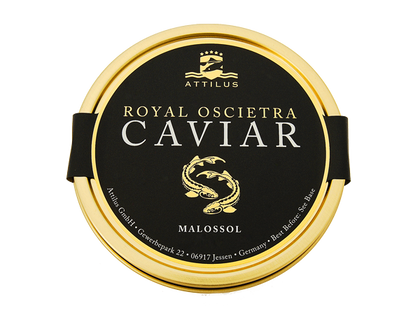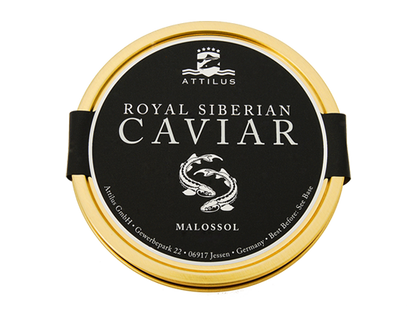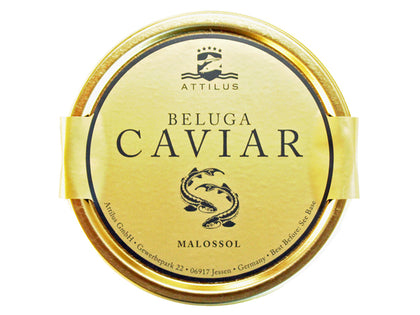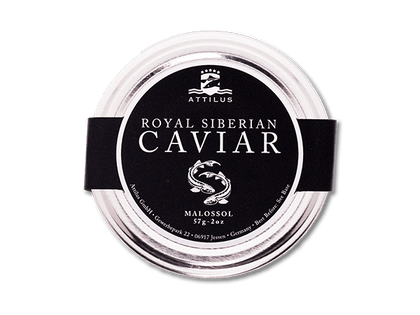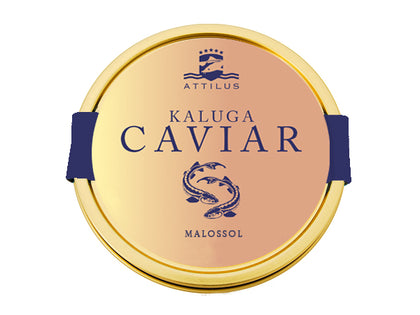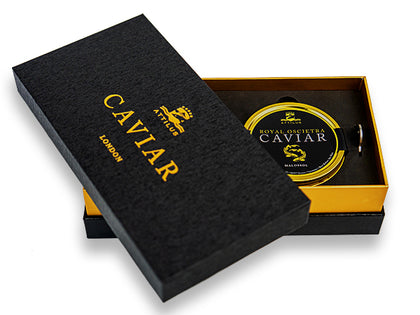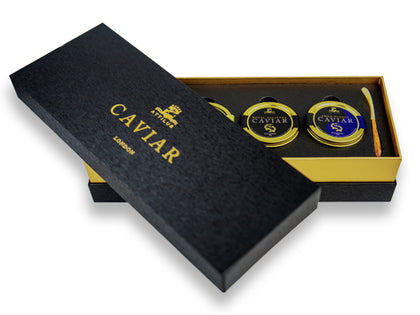
A novice can easily become confused when buying caviar, especially when it comes to the wide variety of roe that is available these days. But if you know what you’re looking for and where to discover the relevant information, finding exceptional quality caviar at a good price needn’t be all that tricky.
Everyone knows that caviar prices can run quite high, but paying more doesn’t necessarily guarantee better tasting caviar. The best approach to buying caviar is, of course, to be prepared. Knowing that there are 4 main varieties of real sturgeon caviar to choose between – Baerii, Sevruga, Oscietra and Beluga – each produced by a different species of sturgeon is just the start.
When choosing between caviars, here are 5 key things you may like to know:
1) How to Check the Caviar Variety in the Tin
In the rarefied world of caviar, labelling on the front of the tin can be puzzling, so you should know exactly how to identify what’s inside the tin. It’s really easy to find out exactly what you’ll be enjoying and where it was produced. You’ll find this information on merchant websites – trusted caviar dealers always include a detailed description of their caviars – or, if you’re in a shop, just ask to see the tin and then turn it over to read the special CITES code on the label, which every legal tin of caviar must display.

The CITES Code gives you all the information you need to properly compare 2 or more caviars, from the sturgeon species which produced the caviar, to the country where the caviar was harvested.
When comparing prices between merchants, remember that caviar from different sturgeon species and producing countries vary a good deal in price. If you intend to buy caviar online, which is both convenient and safe nowadays, this information should be clearly available. If it’s not clear or is vague (for example, ‘we deliver our caviar from different producers’ or ‘we carefully choose the best caviar from the world’s leading producers’), then something fishy may be going on!
The most important information you can learn from the CITES code is:
● The first 3 letters give you the code for the sturgeon species which produced the caviar e.g. BAE stands for Baerii (the sturgeon which produces Siberian caviar), GUE is Gueldenstaedtii (the sturgeon which produces oscietra caviar), HUS is Huso Huso (beluga), etc.
● The third set of letters inform you about the country of origin, where the caviar was harvested. For example, DE stands for Germany, RU is Russia, IR for Iran, IT is Italy, etc.
To find out more on how to read a CITES label, just click here.
2) How to Check the Harvesting Country
The CITES code can help you understand the country your caviar originates from, and by this we mean where the caviar was harvested from the fish. Many caviar dealers are in fact resellers of caviar, repackaging imported produce and relabelling it under their own brand. The criteria such merchants use when choosing a wholesaler is not always transparent.
3) Assessing Quality
Perhaps the trickiest criteria for the novice, as an assessment of quality requires an in-depth knowledge of production methods ranging from fish husbandry, breeding and feeding to caviar processing and maturation procedures, and then packaging and transportation conditions.
Our advice:
● look at direct farm-to-table producers before resellers, their reputation depends on high quality
● search for caviar from countries with good business practices and rigorous and ethical production rules
● learn about production methods and quality commitments on merchant websites
4) About the Taste
The first thing you need to know before tasting caviar is that there are two types of caviar which differ by production method: Pasteurised and Malossol.
Pasteurisation involves the heat treatment of caviar with the aim of increasing its shelf life. Quite often this process alters the taste. Besides that, due to this procedure part of healthy qualities of the product can be lost.
The ‘malossol method’ preserves the original taste of the product. Malossol caviar contains only roe with less than 5% salt and a tiny amount of preserving agent (borax E285) to help to keep the caviar fresh for up to 3 months.
Buying your caviar direct from a reputable producer you’ll be most likely to get that unique taste of sturgeon caviar you’re looking for.
With time and experience you’ll develop your own preferences. Will you prefer the buttery richness and nutty flavour of Oscietra caviar? Or, perhaps, the more pronounced fishiness and saltiness of Siberian caviar will be more to your taste?
5) The Price
A high price for caviar may indicate a rarer caviar, but does not necessarily mean it is the best tasting or highest quality. Conversely, a low price may indicate poor quality or even a caviar substitute. But really savvy connoisseurs find extremely high quality caviar at comparatively low prices when they go direct to producers. While prices still differ between caviar varieties, if you know your preferred variety or taste, you can start comparing prices for the same tin size from different merchants, either online or in stores.
We hope this guide helps you on what we know will be a magical journey of discovery. The world of caviar is rich in traditions and mystique, but this shouldn’t deter novices. If you know what you’re looking for and where to discover the relevant information, finding exceptional caviar at a great price really isn’t that tricky at all!.
Good luck!

